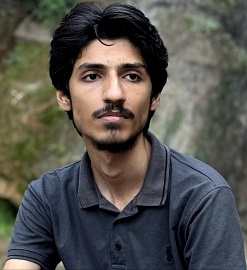| Tue. July 01, 2025 | |

|
|
|
 Introduction The Gulf region, a focal point of significant power competition, particularly between the United States and the Islamic Republic of Iran, contains vital marine trade routes and vast oil reserves. Alongside regional alliances and nuclear tensions, their protracted conflict, rooted in geopolitical objectives and ideological disparities, manifests as strategic dominance over vital maritime chokepoints. The Strait of Hormuz and the adjacent islands of Abu Musa, Greater Tunb, and Lesser Tunb serve as crucial focal points in the global energy supply conflict. Before the 1979 Iranian Revolution, Israel and Iran had a strategic alliance due to their mutual concerns regarding Arab nationalism. Following the revolution, Iran adopted an anti-Israel and anti-US stance, severing diplomatic relations and labeling Israel as the "Little Satan." This development reinforced the United States' commitment to Israel's security and led to an augmented American military presence in the Gulf, especially in the maritime domain. Israel is contemplating preemptive strikes due to its perception of Iran's nuclear ambitions as an existential danger. Iran has threatened to respond by closing the Strait of Hormuz, which would significantly affect the global oil supply. The strategic positioning and fortification of Gulf islands exacerbate these tensions, as both states seek to assert supremacy and monitor activities in this contested region. The Gulf islands function as essential military installations and territorial resources. The maritime dimension of the U.S.-Iran confrontation is essential since it catalyzes hostilities. Militarized Islands Iranian-controlled islands i. Abu Musa is an island located in the center of the strait, towards the north. This disputed island is administered by Iran but is claimed by the UAE. The main purpose is to monitor and potentially control maritime traffic. Heavily militarized with an anti-ship missile system, Radar, and Air Defense platform. Due to its strategic location, being very near to both Iran and the UAE, it becomes a strategic asset of Iran to counter the US. ii. Greater and Lesser Tunbs, these islands are also a disputed region claimed by the UAE but administered by Iran. They are heavily militarized and hosted by the IRGC, Islamic Revolutionary Guard Corps. Militarization includes the Iranian Naval base, drones & missile facility, and surveillance capabilities enhancing Iranian response in the region. iii. Qeshm Island, Qeshm is by far the largest and undisputed island, claimed and administered by Iran. This island is geographically very near to Iran, hence serving as a major logistics hub and hosting a major IRGC Naval base. This island is also equipped with a missile system and facilitates an underground facility for housing submarines, further increasing the maritime presence and operational capability of Iran in the Persian Gulf. iv. Lark, Hormuz, and Hengam islands. Lark is situated toward the narrowest point of the strait, and equipped with missiles, and is a venue of Iranian Naval drills, hence proving very critical for the strait. Hormuz, located closer to the main Iranian land, and Hengam, closer to Qeshm island, serve as a critical surveillance and radar outpost. They also facilitate fast attack crafts by the IRGC, supporting Iran's rapid deployment in the Strait. US-controlled islands and maritime zones i. Bahrain is a sovereign nation having an island-based territory with an area of 786 square Km. Bahrain hosts the US. Navy 5th fleet, responsible for operation in the Persian Gulf, Red sea, Arabian sea and parts of Indian ocean etc. this fleet is responsible for covering approximately 2.5 million square miles of water, including strait of Hurmuz, Suez Canal, and strait of Bab el-Mandeb. ii. Musandam Peninsula (Oman), a territory under Omani sovereignty but geographically situated at the costal line of UAE having direct access to strait of Hurmuz. This peninsula overlooks the narrowest point of strait, 21 miles across. The US does not have a permanent military base but with collective military agreement with Oman, the US can utilize this area for surveillance and intelligence operations, tracking Iranian movements and activity. iii. Al Udeid Air base (Qatar), located south west of Doha, it is the largest US air base in middle east. It also acts as major logistics hub for US operation in this region and serves as a headquarters for US central command. This airbase provides high speed air response capability and protection for the US navy. Militarized islands outside the Strait of Hurmuz/Persian Gulf i. Diego Garcia (British Indian Ocean Territory) This island accommodates US deep water port, long rung way capable of hosting b-2 and b52 bombers and can facilitate submarine and satalight connections. The operational capability can be exemplified with the gulf war and invasion in Iraq when this base was as key launch point for bombers and logistics supply. This reach effectively counters any Iranian ambitions in the Persian Gulf, Gulf of Aden and the Arabian sea. ii. Socotra Island (Yemen). Located in north western Arabian sea, and internationally recognized under Yemen territory it has become a contest for power due to its high strategic advantage as being near to strati of Bab el-Mandeb and Red sea, while also having strategic reach toward strait of Hurmuz and Persian Gulf. During the Yemeni Civil war in 2015, the UAE as a part of Saudi-led collation force deployed military it’s in Socotra, under the pretext of humanitarian without the formal approval of Yemeni government. The UAE has established numerous military facilities including airship, naval ports, radars, and surveillance capabilities etc. The Inevitable Flashpoint The effects of militarization can be seen in both geo-economics and geo-political contexts. In terms of geo-economics, due to high risk factors, global oil prices have become volatile. Every time Iran threatens to block the Strait of Hormuz, oil prices spike due to fear of supply disruption. This volatility directly affects major oil-reliant economies like India, Japan and the EU. Hence, little tension in this region can have a global effect, which can be seen as both the powers i.e., Iran and the US have materialized the islands, prompting the investors in divestment, resulting in an unpredictable stock market. The militarization of the island in the Arabian Sea, in the Strait of Hormuz, is the epitome of the security dilemma that is driving tensions between the U.S. and Iran. The nuclear ambitions of Iran and its asymmetric warfare capabilities have prompted the U.S. to strengthen its maritime dominance through alliances and island military bases. On the other side, Iran views U.S. deployments at sea and regional partnerships (e.g., Bahrain's Fifth Fleet, Omani surveillance outposts) as threats to its very existence, and thereby justifies the militarization of disputed islands such as Abu Musa and the Tunbs. This self-reinforcing dynamic turns these islands into mini-hotspots whereby localized provocation drone strikes, naval battles, or cyberattacks could become a flashpoint for full-scale conflict in very short order. Pathways to De-escalation: Recommendations i. Confidence-Building Measures (CBMs): Establish a U.S.-Iran joint hotline for naval communications to prevent miscalculation during naval maneuvers. ii. Multilateral Chokepoint Governance: Enlarge the International Maritime Security Construct (IMSC) to encompass China and India, stopping unilateral militarization. iii. Tech Safeguards: Negotiate a regional treaty prohibiting AI-based weapons systems in islands. Conclusion The militarization of islands like Abu Musa, Qeshm, and Diego Garcia is the embodiment of the security dilemma fueling U.S.-Iran tensions. Iran's Anti-Access/Area Denial (A2/AD) doctrine, supported by its island states, makes it possible for asymmetric threats against American naval hegemony. As a reaction, the U.S. has bolstered its presence in the form of alliances with Bahrain, Qatar, and Oman, generating a pattern of action-reaction that increases the potential for miscalculation. For instance, Iranian tanker seizures of 2019 and U.S. basing of B-52 bombers at Al Udeid Air Base show how the islands are acting as force multipliers of the hybrid warfare. Muhammad zain Ul Haq is an International Relations analyst from Bahria University.
|
|
| Contact Us | About Us | Donate | Terms & Conditions |
|
All Rights Reserved. Copyright 2002 - 2025
